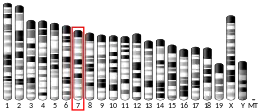| OR10A2 | |||||||||||||||||||||||||||||||||||||||||||||||||||
|---|---|---|---|---|---|---|---|---|---|---|---|---|---|---|---|---|---|---|---|---|---|---|---|---|---|---|---|---|---|---|---|---|---|---|---|---|---|---|---|---|---|---|---|---|---|---|---|---|---|---|---|
| Identifiers | |||||||||||||||||||||||||||||||||||||||||||||||||||
| Aliases | OR10A2, OR10A2P, OR11-82, OR11-86, OST363, olfactory receptor family 10 subfamily A member 2 | ||||||||||||||||||||||||||||||||||||||||||||||||||
| External IDs | MGI: 3030548 HomoloGene: 72055 GeneCards: OR10A2 | ||||||||||||||||||||||||||||||||||||||||||||||||||
| |||||||||||||||||||||||||||||||||||||||||||||||||||
| |||||||||||||||||||||||||||||||||||||||||||||||||||
| |||||||||||||||||||||||||||||||||||||||||||||||||||
| |||||||||||||||||||||||||||||||||||||||||||||||||||
| |||||||||||||||||||||||||||||||||||||||||||||||||||
| Wikidata | |||||||||||||||||||||||||||||||||||||||||||||||||||
| |||||||||||||||||||||||||||||||||||||||||||||||||||
Olfactory receptor family 10 subfamily A member 2 is a protein that in humans is encoded by the OR10A2 gene. [5]
Function
Olfactory receptors interact with odorant molecules in the nose, to initiate a neuronal response that triggers the perception of a smell. The olfactory receptor proteins are members of a large family of G-protein-coupled receptors (GPCR) arising from single coding-exon genes. Olfactory receptors share a 7-transmembrane domain structure with many neurotransmitter and hormone receptors and are responsible for the recognition and G protein-mediated transduction of odorant signals. The olfactory receptor gene family is the largest in the genome. The nomenclature assigned to the olfactory receptor genes and proteins for this organism is independent of other organisms. [provided by RefSeq, Jul 2008].
Genetic differences
OR10A2 (as well as OR6A2 which is located near it on chromosome 11) has been proposed as a candidate gene responsible for the genetic portion of the variation in cilantro preference.[6]
References
- 1 2 3 GRCh38: Ensembl release 89: ENSG00000170790 - Ensembl, May 2017
- 1 2 3 GRCm38: Ensembl release 89: ENSMUSG00000049674 - Ensembl, May 2017
- ↑ "Human PubMed Reference:". National Center for Biotechnology Information, U.S. National Library of Medicine.
- ↑ "Mouse PubMed Reference:". National Center for Biotechnology Information, U.S. National Library of Medicine.
- ↑ "Entrez Gene: Olfactory receptor family 10 subfamily A member 2". Retrieved 2020-04-19.
- ↑ Eriksson N, Wu S, Do CB, Kiefer AK, Tung JY, Mountain JL, Hinds DA, Francke U (29 November 2012). "A genetic variant near olfactory receptor genes influences cilantro preference". Flavour. 1. arXiv:1209.2096. doi:10.1186/2044-7248-1-22. S2CID 199627.
Further reading
This article incorporates text from the United States National Library of Medicine, which is in the public domain.



